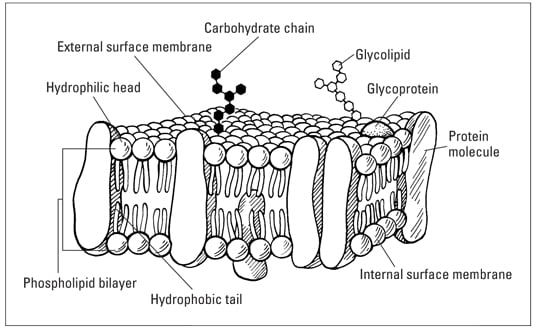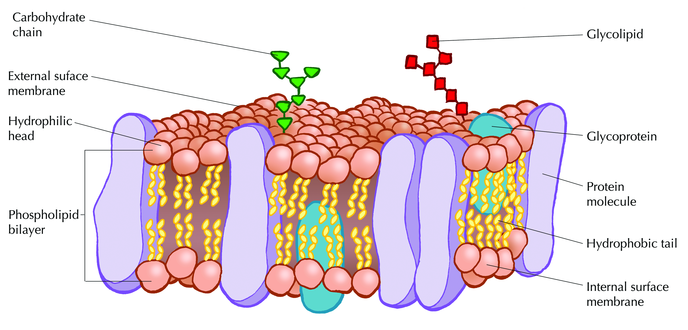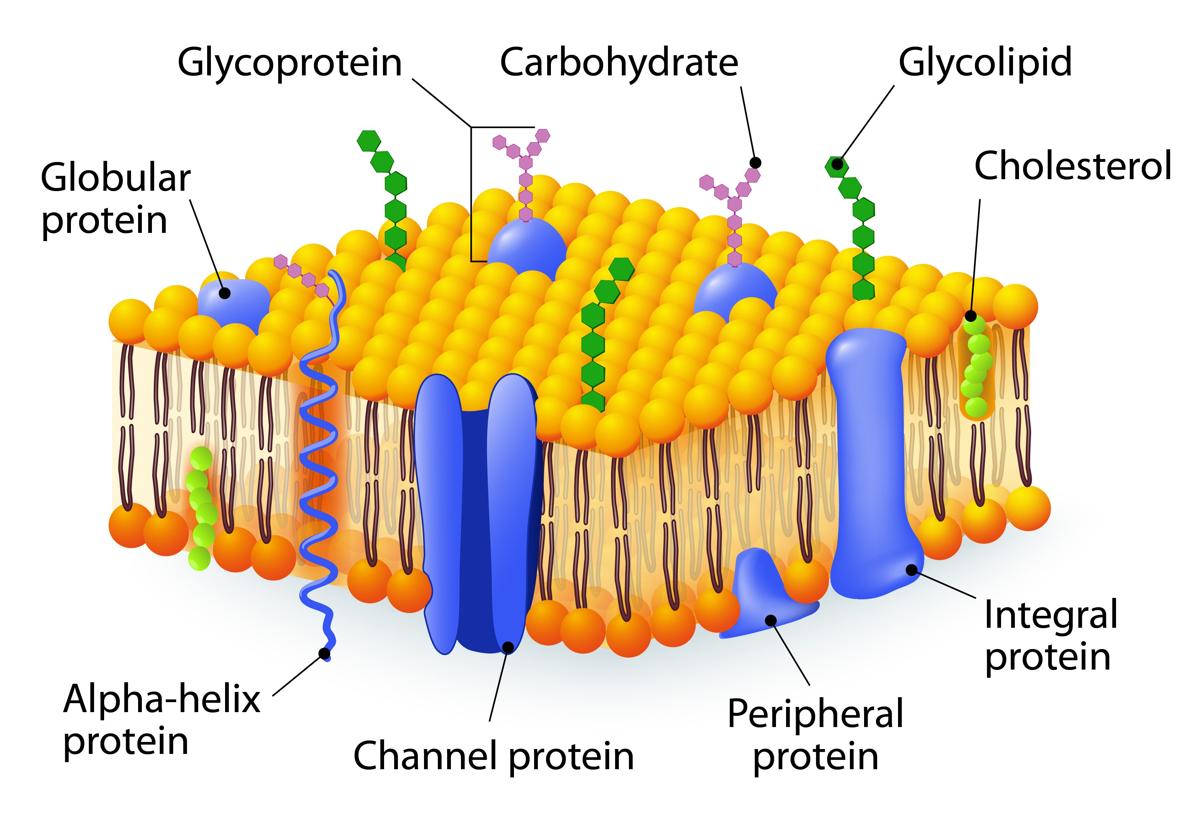Fluid mosaic model is the most accurate model that explains the structure of the cell membrane. According to this model glycoproteins large protein molecules are embedded partially or completely in the phospholipid bilayer.
Fluid Mosaic Model Online Biology Dictionary
Fluid mosaic model definition.

What is the fluid mosaic model. Plasma membranes range from 5 to 10 nm in thickness. While Singer and Nicolson had substantial evidence drawn from multiple subfields to support their model recent advances in fluorescence microscopy and structural biology have validated the fluid mosaic nature of cell membranes. As shown in the diagram above the bilayer is composed of hydrophilic water-loving heads that interact with the water on the outside environment and a hydrophobic water-fearing tails that face each other in the inner structure of the membrane.
The plasma membrane that surrounds these cells has two layers a bilayer of phospholipids fats with phosphorous attached which at body temperature are like vegetable oil fluid. This model also includes both integral and peripheral proteins. Cell membranes are represented according to a fluid-mosaic model due to the fact that they are.
The fluid-mosaic model describes the plasma membrane of animal cells. Fluid Mosaic Model Source. The fluid mosaic model of cell membrane was first proposed by SJ.
It describes the structure of cell membranes where a flexible lipid layer is spread with large protein molecules that act as channels through which other molecules enter and exit any cell. These components give a fluid character to the membranes. The fluid mosaic model of membrane structure is often thought of in terms of a homogeneous mixture of lipids in a lipid bilayer studded with proteins.
Nicolson This model explains the structure of the plasma membrane Plasma membranes made up of phospholipids proteins cholesterol and carbohydrates These components give a fluid character to the membranes. Fluid the phospholipid bilayer is viscous and individual phospholipids can move position. The fluid mosaic model describes the structure of the plasma membrane as a mosaic of components including phospholipids cholesterol proteins and carbohydratesthat gives the membrane a fluid character.
The Fluid Mosaic Model states that membranes are composed of two layers of phospholipids molecules. The fluid mosaic model describes the structure of the plasma membrane as a mosaic of components including phospholipids cholesterol proteins and carbohydratesthat gives the membrane a fluid character. Mosaic the phospholipid bilayer is embedded with proteins resulting in a mosaic of components.
The fluid mosaic model is one way of understanding biological membranes consistent with most experimental observations. According to this model the plasma membrane is similar to a fluid in which various molecules are arranged in a mosaic-like pattern. The cell membrane structure- Fluid mosaic model The cell membrane separates a watery cytoplasm from a watery external environment also known as ECF.
The model comprises the composition and dynamics of membranes and serves as a foundation for future membrane-related studies. The fluid mosaic model explains changes in structure and behavior of cell membranes under different temperatures as well as the association of membrane proteins with the membranes. Who Proposed Fluid Mosaic Model.
The Fluid Mosaic Model states that membranes are composed of a Phospholipid Bilayer with various protein molecules floating around within it. The protoplasm of every living cell is enclosed by a plasma membrane. The fluid mosaic model of plasma membrane is the most accepted hypothesis which describes the membranous components and their functions.
Singer and Garth L. The fluid mosaic model was proposed by SJ. The fluid mosaic model describes the structure of the plasma membrane as a mosaic of components including phospholipids cholesterol proteins and carbohydratesthat gives the membrane a fluid character.
Structure of the Plasma Membrane Fluid-Mosaic. As its name implies the phospholipid bilayer is made up of many phospholipids that lined up altogether. What is Fluid Mosaic Model.
Plasma membranes range from 5 to 10 nm in thickness. Fluid mosaic model was proposed by SJ. This model states that the components of a membrane such as proteins or glycolipids form a mobile mosaic in the fluid-like environment created by a sea of phospholipids.
Singer and Garth L. The Fluid part represents how some parts of the membrane can move around freely if they are not attached to other parts of the cell. This model explains the structure of the plasma membrane of animal cells as a mosaic of components such as phospholipids proteins cholesterol and carbohydrates.
An alternative is that there are domains consisting of spacially segregated regions with specialized lipid and protein compositions. The fluid mosaic model was first proposed as a visual representation of research observations. Their hydrophilic heads that dissolve easily in water meet the water medium in and out of the cell while their hydrophobic tails that do not dissolve are present inside the membrane.
The phospholipids are arranged in a double layer lipid layer with the hydrophilic heads facing outward cytoplasm or ECF and the hydrophilic tails turned in towards each other. Singer and Garth L.

The Fluid Mosaic Model Of The Cell Plasma Membrane Dummies

The Fluid Mosaic Model Introducing The Cell

Fluid Mosaic Model Biology Wise
